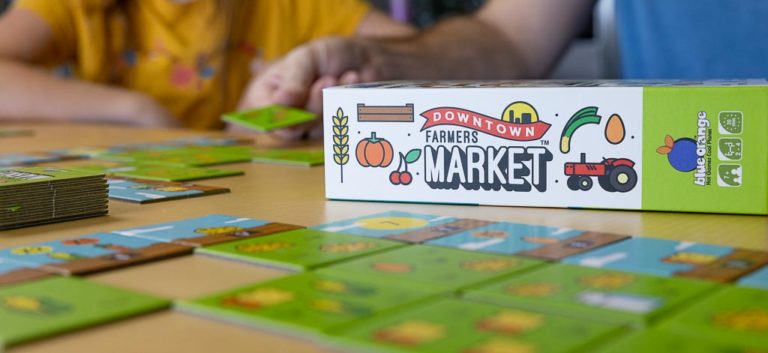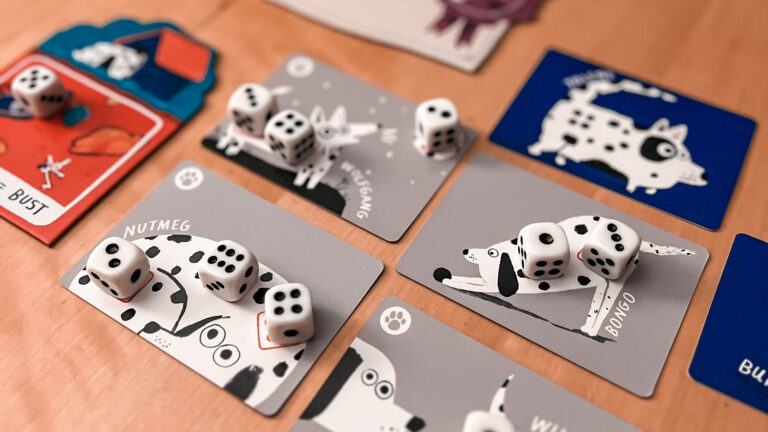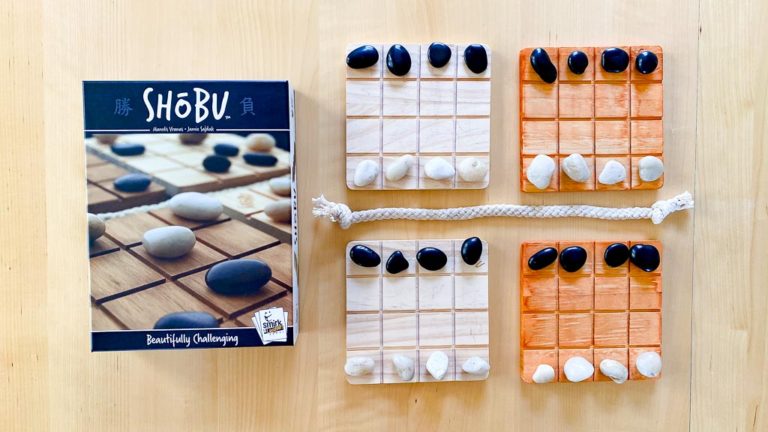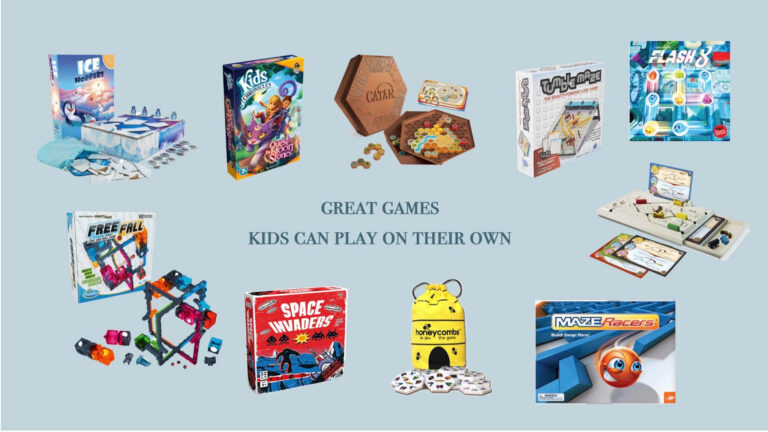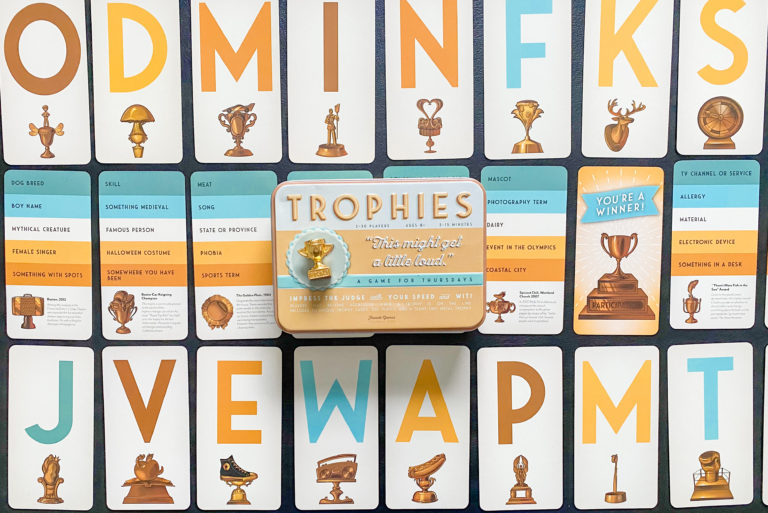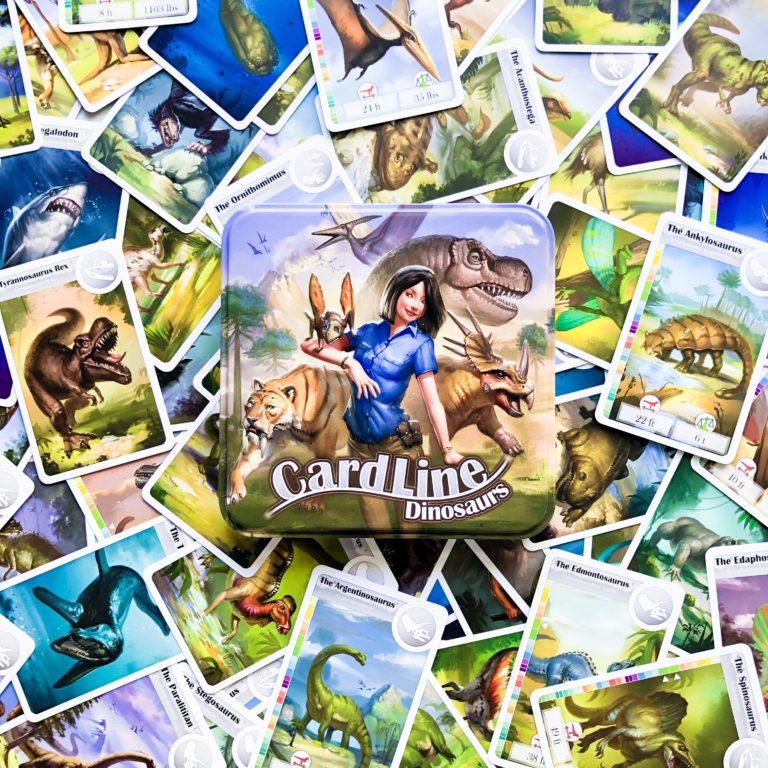I’m sitting there, watching my opponent. They’re analyzing the board. I look at their eyes, fixed on the board, and try to see what they’re looking at.
“Is it my space? Surely it can’t be my space.”
I glance back at my hand, with just a 3 and a 4 and a single forrest card I only have one option left on the board to place my hut this round. If he goes there’ll I’ll be out of options. Surely he won’t go there. It’s only the third round and the available spaces are plentiful.
He grabs his hut and begins to lay down his cards.
3…
Okay, that’s fine, lots of numbers use three…
4…
Alright, he can still build on the beach, he’ll definitely build on the…
Forrest Card
“What?!?” I exclaim half in jest, half incredulous, “Are you kidding me?? Right there? Now!”
The smirk shows, and the game is on.

What is Mangrovia?
Mangrovia is a mid-weight/family-weight euro style game. Packed inside the beautiful box are handfuls of wooden pieces that set the scene for the Caribbean mangroves where players will fight over acquiring the best locations for the huts that they must build to score points. Those who build their huts the wisest will become the rightful successor to the old chief, winning the game and the envy of their opponents.
Building a hut not only requires that you have the exact price required by the space, without overpaying, but that the landscape space be “active.” There are four different types of landscapes and only two will be active at any given time, so timing is key when it comes to building your huts before your opponent can take a lucrative space for themselves.
At the start of the round, players will in clockwise order place their turn order markers on a specific action set that will not only give them their turn placement, but will also give them two separate actions to use during the round. One for the first half and one for the second half. Once the turn order and actions have been selected, players will take their actions in the order chosen.
Players have a choice of various actions from card selection, amulet collection, and hut building. There is also a fourth action that allows players the ability to select the “active landscapes” where huts will be able to be built and will also grant them the position of starting player for the next round. A boat will travel around these “ritual sites” where players have chosen their actions, first on the west side and then on the east, triggering each action and moving the round along to completion.
The game ends when one player builds their last hut. The points are then tallied and a winner crowned.

Theme and Components
Island themes are a big draw for us. They probably take up the most real estate on our boardgame shelves and was certainly a draw with Mangrovia. However, the theme here isn’t really that relevant the the game play.
This is pretty much a straight forward euro and while the box, board, and pieces are beautiful, we found that we weren’t really invested in the theme so much as we were the mechanics. It felt like the theme really could have been anything and they just chose this one.
The art, components and overall look of the game though are really top notch. While the theme doesn’t technically matter, It all does look great pulled together.

From a component standpoint this game leaves nothing to be desired. The pieces are beautiful, large painted wooden pieces that look wonderful set out on the board. The board itself looks great as the colors really pop and the style has a beautiful, almost watercolor feel to it with great detail from the shading of the forrest trees to the wake left by the boat passing by the ritual sites.

The huts are the perfect size and are really inviting to pick up. We love that they included the bowls for the turn/action markers. They could have easily made these simple cubes or even cardboard pieces, but keeping with the theme and having them be bowls just adds that extra little something to the feel and experience.
Speaking of the experience…
The experience of playing the game itself is truly what makes this one a winner. Euros can sometimes be a bit tricky and fiddly to learn; that is not the case here. The rules are pretty clear and simple to follow, and any aspect that seems a bit confusing while reading, like the various ways of placing huts in active spaces, is instantly cleared up through actual game play. Once you start playing this game just clicks.
The action options offers great choices for players. There aren’t really any goose egg spots here. Even if you don’t get your first choice, there are other options that allow you to do similar or other advantageous moves to help keep you competitive in the game.
The first player spot is an important action to select as it gives you a huge advantage for the next round where you’ll have first choice over the action spaces and will be able to determine the active landscapes for that round as well. This is balanced by not allowing the first player the ability to build a hut or choose the first player spot for their first move in the next round.
We love that each action choice gives you two actions, one for the first part of the round where players are drawing cards and victory point tiles, and one for the second part when players are able to start placing their huts on the board and able once again if they so chose, to draw cards in anticipation of the next round. If you choose your action spaces wisely, you can use your two actions to truly maximize your success that round and build for the next.
Each round plays fairly quickly, even when players are analyzing their options and taking their time to ensure they make the best choice. I think part of this is because the very nature of the game, needing to place huts in specific areas, keeps players invested in watching what’s happening even when it is not their turn.
There is a level of suspense that comes from watching, in eager anticipation of your turn, what your fellow players are choosing to do, worried that they will take the card you desperately need or go in your desired location. This will most certainly happen.
Luckily when it does, you aren’t completely out of it. You can either course correct to a different location, card selecting strategy, or adjust for it in the next round. This is what makes becoming the first player so valuable, and its a something everyone will be vying for.

Overall Thoughts
We love when a game stays tight and competitive and Mangrovia definitely hits the spot here. Every time we have played this game it has stayed tight right up till the end. There haven’t been many blow out victories and even when you lose it’s still a fun experience.
It’s hard to find a game that plays great at all player counts. Sometimes when we see one that advertises 2-5 players we get a little nervous thinking that it probably really needs at least 3 to be enjoyable. With Mangrovia, the 2 player game is just as enjoyable as the 3+ player experience and the game still stays tight and competitive till the end.
With total game play clocking in at a touch over an hour, Mangrovia hits the perfect length. It isn’t so long that you start to get bored or frustrated, continually checking your watch to see how much time has elapsed, and it isn’t short enough to feel like a kid game. This really feels like a gamers-game with all the options, paths to victory, and overall feel of the experience without needing 2 or more hours to play it.
While we wish the theme was perhaps better incorporated, it definitely isn’t a major detraction from the game and it still helps it look beautiful and impressive while playing.
This is going to live on our shelf for a long time and will be a game that we reach for often, whether its just the two of us, or a full five player game.
We highly recommend Mangrovia!
Game Credits
Title: Mangrovia
Published: 2014
Designer: Eilif Svensson
Artist: Victor Boden
Publisher: Zoch Verlag
* This post contains affiliate links at no cost to you. To read my full disclosure policy click here.*

